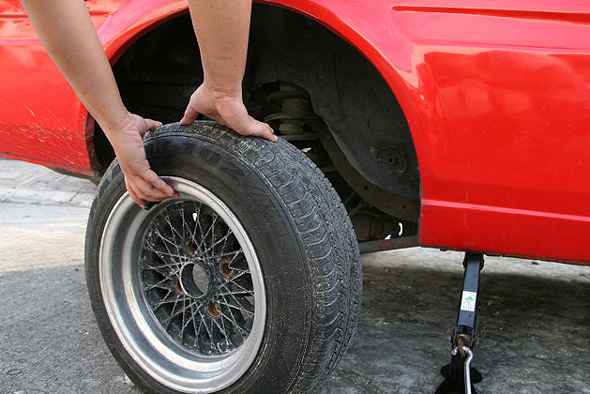Why Proper Tire Installation Matters
Proper tire installation is crucial for a safe and enjoyable ride. When a tire is not installed correctly, it can lead to a range of issues, including reduced tire lifespan, poor performance, and increased risk of accidents. In fact, a poorly installed tire can affect the overall handling and stability of the bike, making it more difficult to control. By understanding the importance of proper tire installation, riders can avoid these common pitfalls and ensure their bike is ready for the road or trail. Whether you’re looking to learn how to put on a rear bike tire or simply want to improve your bike maintenance skills, proper tire installation is an essential step in the process.
Preparing Your Bike for a Tire Change
Before diving into the process of replacing your bike tire, it’s essential to prepare your bike for the task at hand. This crucial step ensures a smooth and efficient tire replacement process. To begin, remove the wheel from the bike by quick-releasing the nuts or using a wrench to loosen the bolts. Next, deflate the tire completely to make it easier to remove. Gather all the necessary tools, including tire levers, a spare tube, and a new tire. Having all the required tools within reach will save time and reduce frustration. Additionally, make sure the area is clean and free from any obstacles that may interfere with the process. By following these simple steps, you’ll be well-prepared to learn how to put on a rear bike tire and complete the replacement process with confidence.
Choosing the Right Tire for Your Bike
Selecting the correct tire for your bike is a crucial step in the tire replacement process. With so many options available, it’s essential to consider several factors to ensure you choose the right tire for your riding needs. First, determine the correct tire size by consulting your bike’s manual or the manufacturer’s website. Next, consider the type of tire you need, such as road, mountain, or hybrid, based on the terrain you’ll be riding on. Additionally, think about your riding style, as some tires are designed for speed and agility, while others prioritize comfort and durability. Budget is also an important factor, as high-quality tires can range from affordable to very expensive. When learning how to put on a rear bike tire, it’s vital to choose a tire that meets your specific needs to ensure a safe and enjoyable ride. By considering these factors, you’ll be able to find the perfect tire for your bike and enjoy a smooth, hassle-free ride.
Removing the Old Tire: A Step-by-Step Process
Removing the old tire is a crucial step in the bike tire replacement process. To begin, deflate the tire completely to make it easier to remove. Next, use tire levers to break the bead, which is the ring of rubber that contacts the rim. Work your way around the tire, using the levers to pry the bead away from the rim. Once the bead is broken, use the levers to remove the tire from the rim. Be careful not to pinch the tube or damage the rim during this process. After removing the tire, inspect the rim for any damage or debris that may affect the installation of the new tire. If you’re learning how to put on a rear bike tire, it’s essential to take your time and be patient during this step, as it can be tricky. By following these steps, you’ll be able to successfully remove the old tire and prepare for the installation of the new one.
Installing the New Tire: Tips and Tricks
With the old tire removed, it’s time to install the new one. Begin by mounting the tire onto the rim, making sure it’s properly seated and centered. Use tire levers to ensure the tire is securely attached to the rim. Next, inflate the tire to the recommended pressure, which can be found on the sidewall or in the bike’s manual. It’s essential to inflate the tire slowly and carefully to avoid damaging the tube or tire. Once inflated, check the tire’s alignment by spinning the wheel and checking for any wobbles or unevenness. If you’re learning how to put on a rear bike tire, this step is crucial to ensure a smooth and safe ride. Additionally, make sure the tire is properly aligned with the brake pads and derailleurs to avoid any issues with braking or shifting. By following these tips and tricks, you’ll be able to successfully install the new tire and get back on the road.
Tightening the Tire: Avoiding Common Mistakes
Tightening the tire is a critical step in the bike tire replacement process. To ensure a safe and secure ride, it’s essential to tighten the tire correctly. Start by using tire levers to tighten the nuts in a star pattern, which helps to distribute the pressure evenly. Avoid over-tightening, as this can damage the rim or strip the threads. Instead, tighten the nuts in small increments, checking the tire’s tightness after each turn. When learning how to put on a rear bike tire, it’s crucial to understand the importance of proper tire tightening. A loose tire can lead to a blowout, while an over-tightened tire can cause damage to the rim or wheel. By following these steps and avoiding common mistakes, you’ll be able to ensure a secure and reliable ride. Remember to always refer to your bike’s manual for specific tightening instructions, as the process may vary depending on the type of bike and tire.
Final Check: Ensuring a Safe and Secure Ride
Before hitting the road, it’s essential to perform a final check to ensure your bike is safe and secure. Start by checking the tire pressure, making sure it’s at the recommended level for your tire and riding style. Next, inspect the brake function, ensuring the pads are properly aligned and not worn down. Additionally, check the wheel alignment, making sure the tire is properly seated and centered on the rim. By following these steps, you’ll be able to identify any potential issues before they become major problems. When learning how to put on a rear bike tire, it’s crucial to remember that a thorough final check is key to a safe and enjoyable ride. Take the time to double-check your work, and you’ll be able to ride with confidence. Remember to always refer to your bike’s manual for specific guidelines on performing a final check, as the process may vary depending on the type of bike and tire.
Troubleshooting Common Issues: Overcoming Obstacles
Despite following the proper steps, issues can still arise during the tire replacement process. One common problem is a stuck tire, which can be resolved by applying lubricant to the rim and tire bead. Another issue is a damaged rim, which may require professional repair or replacement. Incorrect tire installation is also a common mistake, which can be avoided by double-checking the tire’s alignment and ensuring it’s properly seated on the rim. When learning how to put on a rear bike tire, it’s essential to be prepared for these common obstacles. By knowing how to troubleshoot and overcome these issues, you’ll be able to complete the tire replacement process with confidence. Additionally, it’s crucial to remember that practice makes perfect, so don’t be discouraged if you encounter setbacks along the way. With patience and persistence, you’ll be able to master the art of bike tire replacement and enjoy a safe and enjoyable ride.







